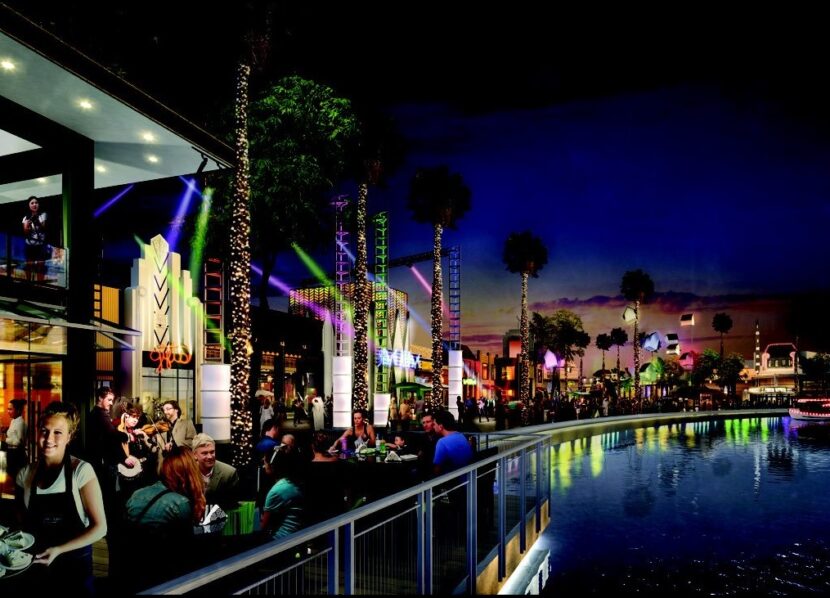DUBAI, United Arab Emirates — Sweating and hopeful, the performers lined up once more and received instructions mirroring the aspirations of the soon-to-open massive amusement parks they hoped to join: dance three-eighths Bollywood with a stiff shot of hip hop and a touch of whimsy.
And one more thing: “Does anyone tumble?”
This cross-cultural collage will be Dubai Parks & Resorts, a $2.8-billion bet on tourism in this Mideast city-state featuring a Taj Mahal-inspired theatre, the interlocking plastic bricks of Legoland and movie-themed attractions.
Despite all the glitz on display, the attraction is clouded by the earlier experience of an amusement park project that went bust and the fact that low oil prices that have cut into pockets across the Gulf. But backers remain optimistic, suggesting that lower fuel prices will eventually make flights less expensive, helping them to attract visitors from Europe and Asia once the park opens in October.
The park, planned to be over 25 square kilometres (9.5 square miles), sits southwest of downtown Dubai in the wind-swept deserts off the main highway linking it to Abu Dhabi, the capital of the United Arab Emirates.
The area is close to where Dubai plans to host the 2020 World Expo, or world’s fair, as well as Al Maktoum International Airport at Dubai World Central, which officials hope someday will handle over 200 million passengers a year. Dubai’s ruler, Sheikh Mohammed bin Rashid Al Maktoum, recently announced the creation of a planned $8.1 billion project nearby called Dubai Wholesale City.
“We’re no longer the Lone Ranger out in the desert,” said Vinit Shah, Dubai Parks & Resorts’ chief destination management officer.
A red dragon built out of 230,000 Lego bricks has already arrived for a Legoland roller-coaster. Motiongate, the project’s movie-themed park, will feature a “Smurfs village” and a live-action, hip-hop show based on the “Step Up” film franchise. Bollywood Parks, a Lego-inspired waterpark, as well as shops, restaurants and a luxury hotel round out the project.
Some 15,000 labourers are employed on the site, Shah said. Some 5,000 palm trees and 1.2 million shrubs will be planted alongside air-conditioned queues to battle Dubai’s summertime heat, when the temperature hovers above 40 degrees Celsius (104 degrees Fahrenheit) with high humidity. Many attractions also will be inside.
“Every couple of degrees helps,” Shah said.
Shares in Dubai Parks & Resorts trade on the Dubai Financial Market stock exchange at around 1.20 dirhams ($0.33) apiece. Its majority owner, with 60 per cent of the company, is Meraas Holding, a firm backed by Sheikh Mohammed. The Kuwait Investment Authority, that country’s sovereign wealth fund, also owns a 5-per cent stake, as does Bahrain’s Mubasher Financial Services.
Investors hope to gain from the growing number of tourists visiting Dubai, home to the long-haul airline Emirates, the world’s tallest building, luxury malls and other attractions. In 2015, Dubai saw 14.2 million overnight visitors, up from 13.2 million the year before, according to the emirate’s Department of Tourism and Commerce Marketing. Authorities hope to have 20 million visitors per year by 2020.
Among Dubai’s top visitors are those from surrounding Gulf countries, chief among them neighbouring Saudi Arabia and Oman. The plunge in oil prices has affected high-end shopping in Dubai, said Philip Shepherd, a partner at PricewaterhouseCoopers in the Middle East who has done feasibility studies on the park.
But Shepherd said airline ticket prices likely will drop, and that more family-focused tourists than ever want to come to Dubai from India, as well as the United Kingdom. They’ll find the Dubaiamusement park fits their budget and needs, he said.
“Apart from small ones like Ferrari World and a few waterparks, nothing really exists in the region at all,” Shepherd said. “If you just look at the number of people coming into Dubai, the opportunity to access the European market on one side and the Asian market on the other side … it’s an untapped opportunity.”
Shah agreed.
“Regional instability is actually something that has helped some of the development in Dubai,” he said. “We’re trying to build a destination that appeals to families and populations that probably find it difficult to go to places right now where some of this is offered.”
The latest project pales in comparison to Dubailand, a fever-dream of an amusement park conceived at the height of Dubai’s property bubble. Dubailand was to sprawl over some 260 square kilometres (100 square miles) of desert and include parks like Legoland, Universal Studios and Six Flags, as well as other attractions.
But Dubailand, proposed by a company in a conglomerate also controlled by Sheikh Mohammed, collapsed when property values in the emirate crashed amid the Great Recession. Heavily indebted,Dubai accepted multibillion-dollar emergency aid packages from Abu Dhabi to stay afloat.
Today, the dream of Dubailand is as faded as the lonely Universal Studios gates that open onto empty desert behind it.
A livelier scene awaits at Dubai Parks & Resorts, where dancers and singers have been recruited from across the globe to appear as costumed characters, rappers and acrobatic trampoline artists.
“What we are doing is truthfully extraordinary,” said Jason Ramsburg, the director of live entertainment at the park. “We have over 400 performers and really high-quality brands with the best of the best in the world.”

